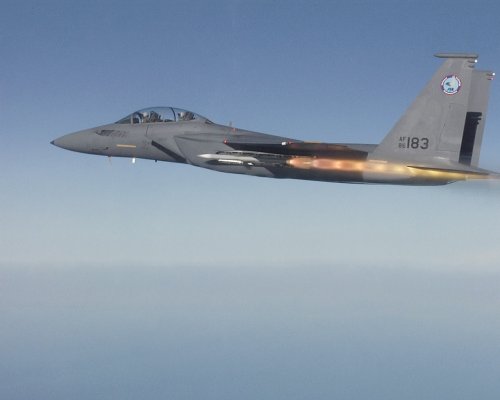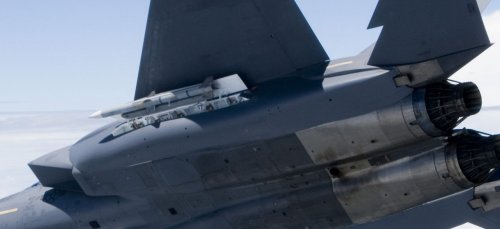The South Korean military had hoped to rely on the US for procuring fighters under their FX-III plan, needing a modern semi-stealth fighter to keep their forces battle ready in this millennium. Boeing’s propossed F-15 Silent Eagle (F-15 SE) was meant to fill that void with modern sensor arrays, canted tails, and internal weapons bays.
Unfortunately, it looks likely that Boeing will fail the South Koreans in meeting their air superiority needs, in what appears a design process more akin to Dunder Mifflin/Wernham Hogg-esque business model:
Industry insiders raised questions Wednesday about whether U.S. aerospace giant Boeing will fulfill its pledge to offer F-15 Silent Eagles (F-15 SEs) with an internal weapons bay and twin canted tails, two of the core technologies for stealth jets, to Seoul.
A source familiar with Boeing’s plan to modify its F-15s said little progress has been made in the making of the F-15SE, especially in the development of its conformal weapons bay (CWB), which allows the aircraft to carry weapons internally.
“Only 10 percent of work has been completed for the research and development of the F-15SE’s conformal weapons bay,” the informed industry source said.
The Korea Aerospace Industries (KAI) has been carrying out research and development of the F-15 SE’s internal weapons bay, a crucial stealth feature, since signing a memorandum of understanding (MOU) with Boeing in 2010.
The CWB, a common characteristic of aircraft with low visibility, was a compulsory requirement to enter Korea’s FX-III bid, the country’s third and last phase of a program to procure advanced jets.
Seoul, however, has decided to remove the prerequisite to allow more companies to enter the competition, according to Noh Dae-lae, the commissioner of the Defense Acquisition Program Administration (DAPA).
Boeing, which has sold 61 F-15Ks to Korea since 2002, pledged to develop the F-15SE for international customers, including Seoul, by upgrading its F-15 Strike Eagle upon unveiling its concept for the semi-stealth aircraft in March 2009.
An industry source said Beoing has yet to determine whether to push the development of 15-degree outward-canted V-tails, which it proposed to include when the company first announced the F-15SE.
He said Boeing is expected to propose canted vertical tails as an upgrade option to Korea.
Boeing sought to cant the vertical tails of the F-15 outward to reduce the combat aircraft’s radar signature and increase aerodynamic efficiency, but announced it would suspend the development of the new feature in 2010.
Other industry officials noted that it will be physically impossible for Boeing to complete the development of the CWB and canted tails by the end of October this year when Seoul plans to finalize the deal after three to four months of evaluations and negotiations. “Boeing will most likely change their offer. They won’t offer the Silent Eagle,” a senior official of Lockheed Martin, which is competing with Boeing and the European Aeronautic Defense and Space Company (EADS) for the FX-III bid, said asking for anonymity.
“They are going to offer the F-15K because that’s the only plane they can deliver by 2016.”
DAPA officials warned that Boeing may enter the FX-III race after minor upgrades to the F-15K, such as installing Active Electronically Scanned Array (AESA) radars, but the airplane’s stealth capability remains a crucial factor in deciding which new fighter jets will be purchased.
“Boeing may compete in the FX-III race without having to complete its development of the CWB or canted vertical tails, but it should bear in mind that Korea is eyeing to acquire advanced jets, rather than outdated ones,” a senior DAPA official said.
DAPA is expected to issue a request for proposal on Jan. 30 without the requirements of the conformal weapons bay and a specific target value for the radar cross section of the plane. (Source: Lee Tae-hoon, The Korea Times)





